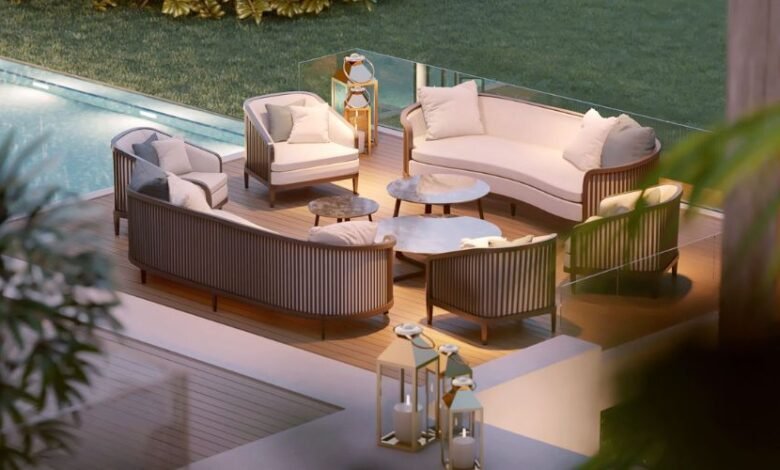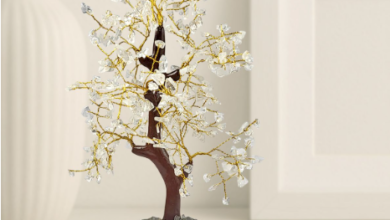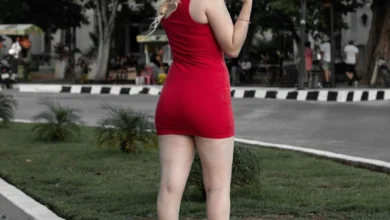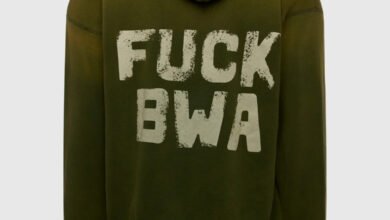What Are the Latest Trends in Upholstery Design?

The world of upholstery design is continuously evolving, driven by changing tastes, technological advancements, and the push toward sustainability. Whether you’re redecorating your home or simply updating your furniture, staying on top of the latest trends can make your space more stylish and functional. Here’s a look at the latest upholstery trends shaping the design industry.
Sustainable Materials Take Center Stage
As environmental awareness grows, consumers are demanding sustainable options in upholstery Dubai. Eco-friendly fabrics made from recycled or natural fibers, such as organic cotton, hemp, and linen, are becoming increasingly popular. Upholstery manufacturers are also experimenting with innovative materials like recycled PET bottles and biodegradable textiles.
In addition, sustainable production practices, such as reducing water usage and avoiding harmful chemicals, are gaining traction. Buyers are not just looking for beautiful furniture; they want pieces that reflect their values.
Bold Colors and Statement Patterns
Neutral tones have long been a favorite in upholstery design, but 2025 is seeing a bold departure. Vibrant shades like emerald green, mustard yellow, and cobalt blue are making their mark. These colors add personality to spaces and work well as accent pieces in otherwise minimalist designs.
Statement patterns, including geometric designs, floral motifs, and abstract prints, are also trending. They add texture and visual interest, making furniture a focal point in any room.
Velvet: The Luxurious Comeback
Velvet has made a stunning return as one of the most sought-after materials in upholstery. Its soft, plush texture and rich appearance make it a top choice for adding sophistication to living rooms and bedrooms. Velvet works beautifully in jewel tones such as deep red, navy blue, and emerald green.
Modern velvets are often blended with synthetic fibers, improving their durability and making them suitable for high-traffic areas.
Multi-Functional Furniture
With more people working and studying from home, multi-functional furniture has become a necessity. Sofas with hidden storage, chairs that convert into beds, and ottomans with built-in compartments are just a few examples of how upholstery design is adapting to smaller spaces and changing lifestyles.
This trend isn’t just about practicality—it’s also about maintaining style while maximizing utility. Upholstered pieces with clean lines and versatile designs are particularly popular in compact urban homes.
Textured Fabrics for Visual Depth
Texture is a significant trend in modern upholstery design. Bouclé, chenille, and tweed are among the fabrics gaining popularity for their tactile appeal. These materials not only feel luxurious but also add dimension to furniture pieces.
The beauty of textured fabrics lies in their ability to complement a variety of styles, from mid-century modern to rustic chic.
Mixing and Matching Fabrics
Gone are the days of perfectly matched furniture sets. Today, the emphasis is on creating eclectic, personalized spaces by mixing and matching different fabrics and patterns. For instance, pairing a leather sofa with velvet chairs or combining patterned cushions with solid upholstery can add character to a room.
This trend allows for more creative expression and gives homeowners the freedom to experiment with contrasting styles.
Artisanal and Handmade Designs
Consumers are increasingly gravitating toward one-of-a-kind, handcrafted pieces that tell a story. Upholstered furniture featuring hand-stitched details, embroidery, or traditional weaving techniques adds a unique, artisanal touch to interiors.
This trend aligns with the growing appreciation for craftsmanship and the desire to own furniture that feels personal and special.
Neutral Palettes with a Twist
While bold colors are making waves, neutral palettes continue to dominate—but with a twist. Shades like taupe, greige (a blend of gray and beige), and muted pastels are modernizing traditional neutral tones. These colors provide a calming backdrop while maintaining a contemporary aesthetic.
To add interest to neutral upholstery, designers are incorporating subtle patterns, piping details, or contrasting textures.
Performance Fabrics for Durability
As families look for furniture that can withstand daily wear and tear, performance fabrics have become a staple in upholstery design. These materials are resistant to stains, moisture, and fading, making them ideal for homes with kids or pets.
Performance fabrics are no longer limited to utilitarian designs. Advances in technology have made them stylish and comfortable, ensuring they meet the aesthetic demands of modern homeowners.
Curved and Sculptural Furniture
Furniture with soft, rounded edges is gaining popularity for its ability to create a welcoming and cozy atmosphere. Curved sofas, crescent-shaped chairs, and sculptural ottomans bring an organic feel to interiors while breaking the monotony of straight lines.
These designs work particularly well in open-concept spaces, where they can serve as standalone statement pieces.
Retro and Vintage Influences
The love for vintage and retro-inspired furniture continues to grow. Mid-century modern designs, with their sleek lines and minimalist appeal, remain a favorite. Similarly, Art Deco-inspired upholstery with luxurious fabrics and metallic accents is making a comeback.
This trend allows homeowners to blend nostalgia with contemporary aesthetics, creating timeless spaces.
Custom Upholstery
As personalization becomes a priority, custom upholstery is taking center stage. Customers want furniture that reflects their unique style and fits perfectly in their spaces. From choosing specific fabrics and colors to adding custom embroidery or trims, the possibilities are endless.
Advances in technology, such as 3D modeling and virtual design tools, are making it easier than ever for consumers to visualize and create their ideal furniture.
Global Inspirations
Global influences are shaping the upholstery trends of 2025. From Moroccan-inspired patterns to Japanese minimalism, designers are drawing from a variety of cultures to create unique and diverse pieces.
Ethnic prints, handwoven textiles, and traditional craftsmanship are celebrated in this trend, bringing a sense of travel and adventure into home décor.
Technology-Integrated Upholstery
The rise of smart homes has extended to furniture design. Technology-integrated upholstery, such as sofas with built-in USB ports, wireless charging pads, and adjustable settings, is gaining traction.
These innovations not only enhance convenience but also add a futuristic element to furniture design.
Outdoor-Inspired Upholstery Indoors
Outdoor fabrics are finding their way into indoor furniture design, offering increased durability and weather resistance. These materials are ideal for high-traffic areas like family rooms or entryways.
Outdoor-inspired upholstery often features earthy tones and natural textures, creating a seamless connection between indoor and outdoor living spaces.
Conclusion
Upholstery design in 2025 is all about blending style, functionality, and sustainability. From bold colors and luxurious fabrics to eco-friendly materials and technology integration, there’s a trend for every taste and need. Whether you’re looking to make a bold statement or create a serene retreat, these trends offer endless inspiration for updating your interiors.



